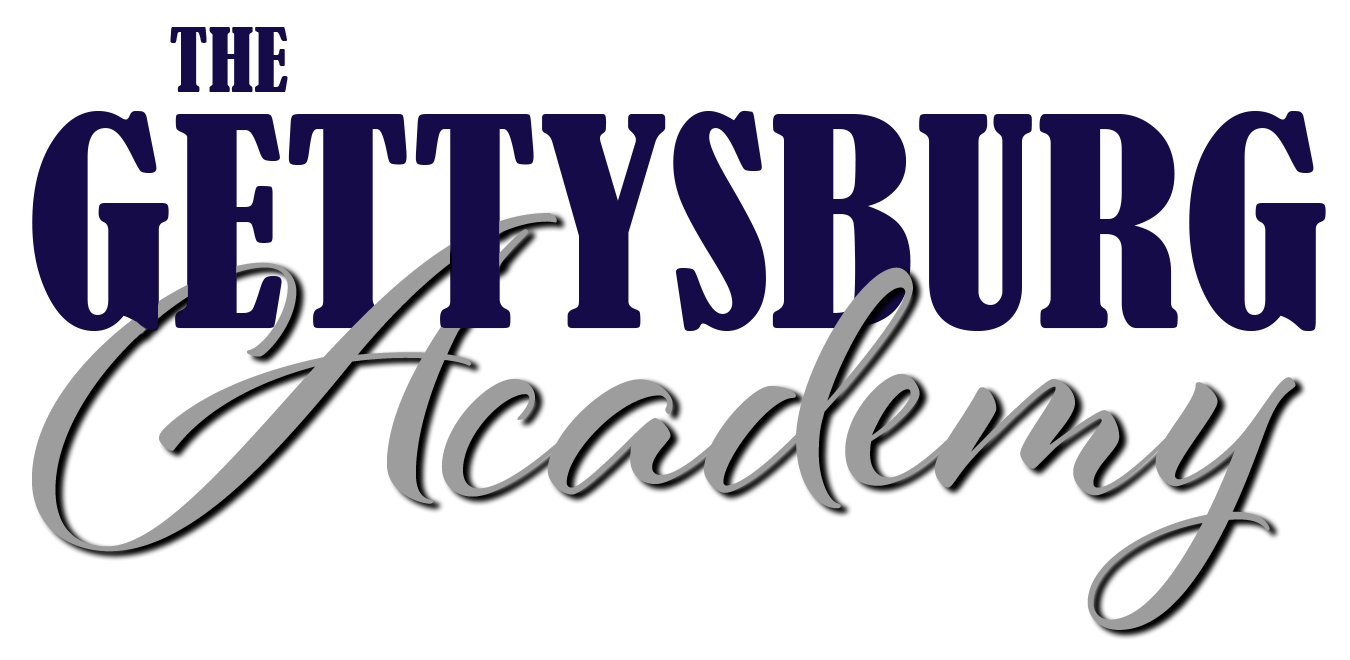Gettysburg Academy
66–68 West High Street
Gettysburg, PA, 17325
Standing on the southeast corner of West High and South Washington Streets in Gettysburg, Pennsylvania, is a structure which has been termed the “cradle” of higher learning in Adams County and for the Lutheran Church in America.
Authorized by the State of Pennsylvania as the first Adams County public school in 1810, the structure was completed in 1813. The building originally housed the Gettysburg Academy, a classical school formed by James Gettys, Thaddeus Stevens and other “public spirited men” in Gettysburg. When that institution failed to thrive, and the General Synod of Lutherans moved to create a Lutheran Seminary in America. The borough offered to loan the building to the new institution, and a donation of seven thousand dollars if it were located in Gettysburg. The seminary met in Linwood (so named for the large Linwood trees that were in the front yard) from 1826 until 1832. In 1827, recognizing the need for pre-seminary preparation, the seminary board established its own classical school, also located in this building, and led by David Jacobs, then a student at the seminary. The loan of the property turned into ownership in 1829, when Samuel Simon Schmucker, president of the seminary, bought the academy building at a sheriff’s sale, and managed the debt with an imaginative stock plan. Shares in the classical school were offered at $50 each; stockholders elected the board of that classical school, and original stockholders could send their sons to the academy without tuition. At the same time, the academy was enlarged to be a Gymnasium, with a scientific department staffed by David’s brother, Michael Jacobs. In 1832 the Gymnasium was transformed into a college. The building was the founding home of both Gettysburg Seminary and Gettysburg College; the two oldest Lutheran educational institutions existing in the western hemisphere.
In the early 1830s, both seminary and college were still housed in the same structure, which now served a total of about 75 students, stretching its capacity. The seminary soon moved to its present location, on the ridge west of here. Pennsylvania College, intentionally non-sectarian in its appeal and curriculum, but attached to the General Synod, remained at Linwood until moving to its present location a few blocks to the north in 1837. After the seminary and college left, the newly established Gettysburg Female Institute, not connected with the earlier institutions used Linwood from 1838 until sometime during the 1870’s. The building also hosted Adams County Anti-Slavery Society founding and follow-up meetings in 1836.
Prior to and during the battle of Gettysburg, The Gettysburg Female Seminary was owned and operated by the Reverend David Eyster and his wife, Rebecca. Matilda “Tillie” Pierce was a student at the Gettysburg Female Institute and wrote a book in 1888 about her experiences, At Gettysburg, or What a Girl Saw and Heard of the Battle. The Academy plays a key role in her recollections:
“With pleasant recollections I bring to mind the Young Ladies’ Seminary on the corner of High and Washington Streets. Here I received instruction, …was graduated and given my diploma.”
“A little before noon on Tuesday, June 30, a great number of Union cavalry began to arrive in town. They passed northwardly along Washington Street and turned west . . . in the direction of the Theological Seminary. I afterwards learned that these men were Buford’s cavalry, numbering about 6000. A crowd of “us girls” were standing on the corner of Washington and High Streets as the soldiers passed by.” The girls sang “The Union Forever.” On July 1 in the afternoon, she was in her literary class when “… a cry reached our ears. Rushing to the door and standing on the front portico, we beheld in the direction of the Theological Seminary, a dark, dense mass, moving toward town. Our teacher, Mrs. Eyster, at once said, ‘Children, run home as quickly as you can.’” Upon returning to the Academy after “… the conflict was over …”, she further recalled, “Within those same walls had been placed some of the wounded and dying heroes of the struggle …” The Gettysburg Academy was used as a hospital during the battle and with the side yard possibly used as a temporary cemetery.
The Academy building is one of the nine buildings in Gettysburg with and artillery shell remaining from the battle. Above the right entrance is imbedded a shell about three inches in diameter. It was most likely fired from Oak Ridge during the first day’s fighting, and has been identified as a Read shell, probably from a 10-pounder Parrott cannon somewhere within the Confederate lines.
Some time during the mid-1870s, the building went into private ownership. The current caretakers are the fourth-generation owners since their great-grandfather purchased the property at a sheriff’s sale in 1932 and converted the building into two units. In addition to operating Reuning’s Pastry Shop at 31 Baltimore Street, the family operated the Motel Tourist Home on one side of the Academy building from the mid-1930s through the early 1950s. A major renovation during the early 1990s joined the two sides into one building and replaced the cupola on the roof that had been removed in the 1932 renovation.
Both Gettysburg College and Gettysburg Seminary have returned to the house for major celebrations, including their 175th anniversaries. In May 2018 the last regularly scheduled class of Gettysburg Seminary was held in the living room of Linwood, returning full circle to the institution’s nativity before it became a part of United Lutheran Seminary.
